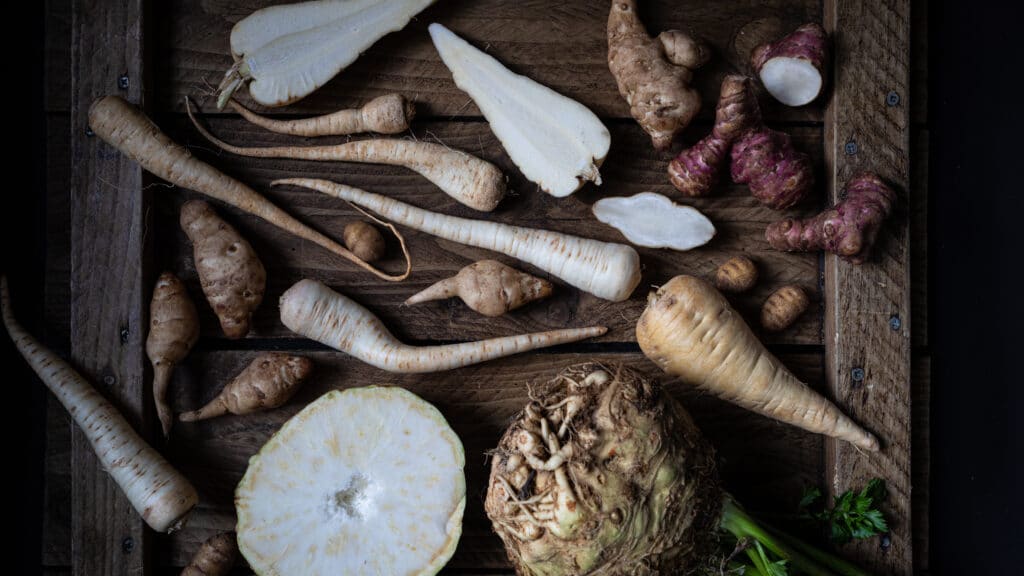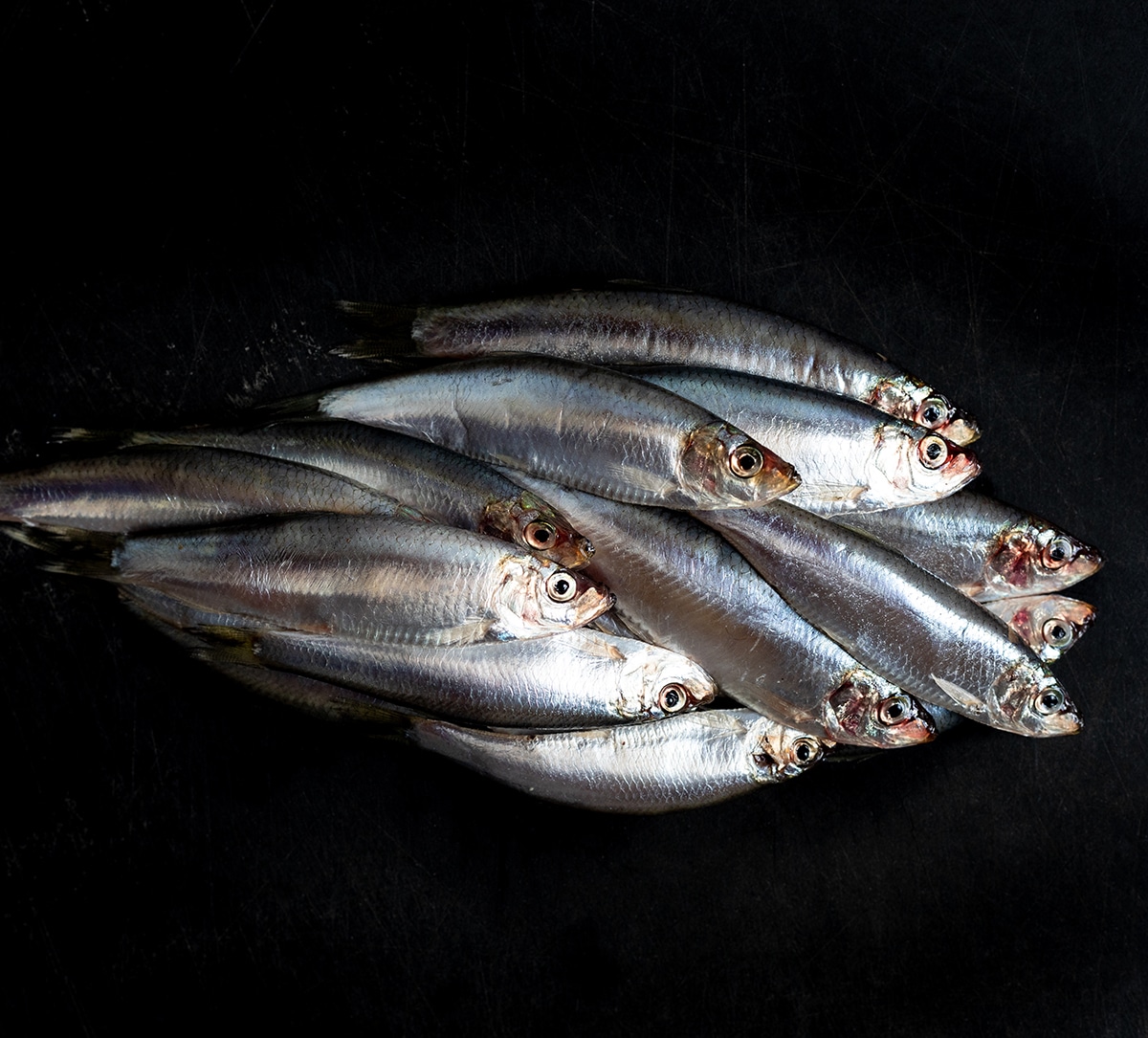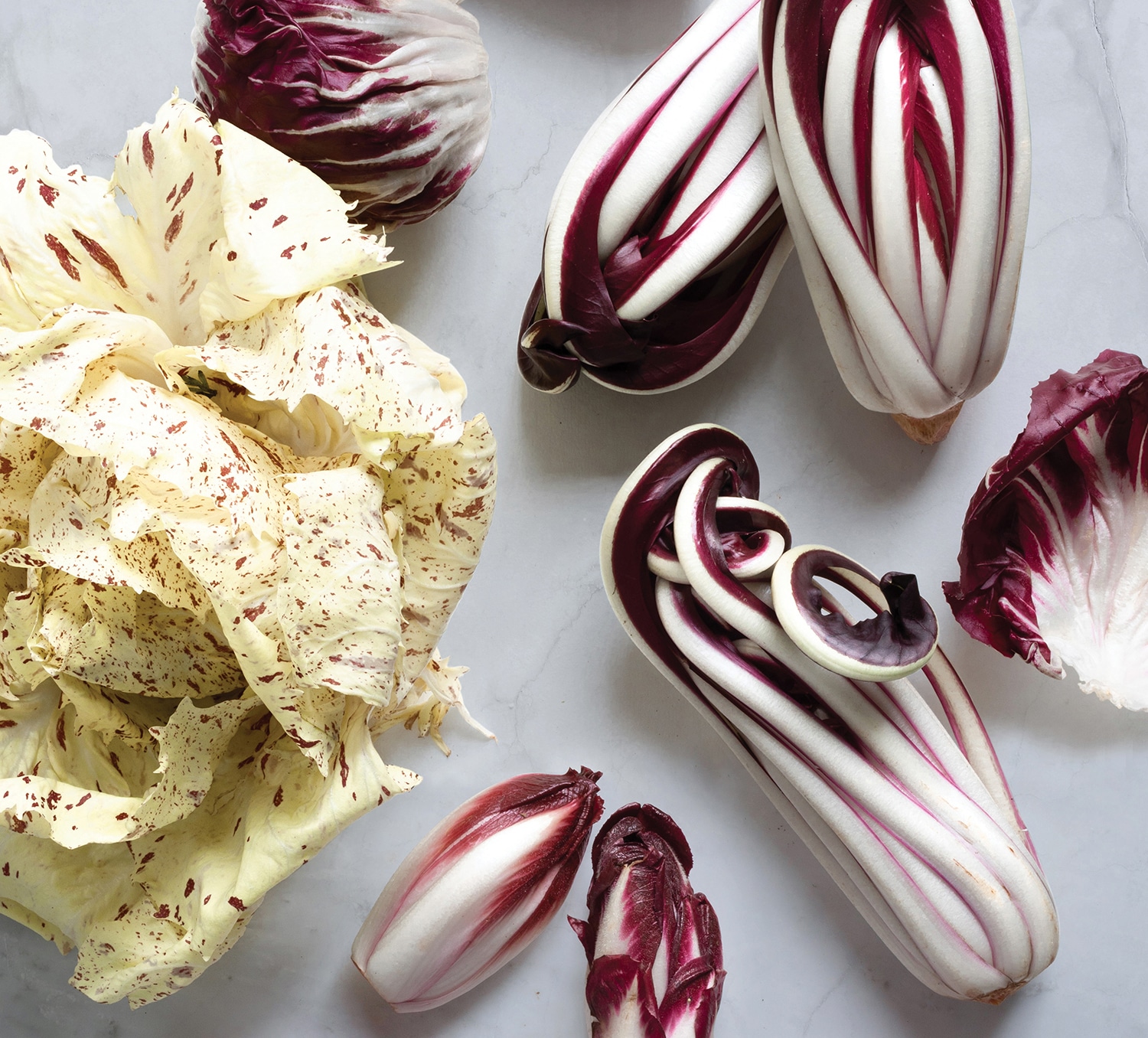Back to my roots
Thom Eagle on why, after a week or so of gorging on warming braises, he comes to crave the sweetness and light provided by the white roots of winter


“THEY LACK THE VISUAL APPEAL OF SUMMER’S PILED TOMATOES, BUT THE WHITE ROOTS OF WINTER POSSESS NO LESS POTENTIAL”
Image: Regula Ysewijn
For the first flush of winter, as the cold and the wet really begin to set in, I am more than happy to wallow in the comfort of beige and warming food, of afternoons spent in the slow construction of a braise. After a week or so of this, however, I often find myself craving something that will balance the tangled bowlfuls of collapsing meat and potatoes: a little sweetness and light. If these are not qualities particularly associated with the potato, then luckily winter’s other roots and tubers possess them in abundance, their gnarled and muddy exteriors revealing, after a scrub and a cut, the clean white flesh within.
I must admit to a profound dislike of parsnip. Christmas dinner when I was young always featured chunks of them roasted in a bowl together with the potatoes, and I don’t think I have ever quite got over the unexpected spicy sweetness in amid the salty starch. This is strange, now I come to think of it, as it is exactly that flavour I love in celeriac, in jerusalem artichoke and in parsley root, the latter a particularly close cousin to the parsnip, all with a shared degree of sugar and comfort but each with herbal notes peculiar to itself. It is up to you, when it comes to cooking, which aspect of the vegetable you want to bring out, and to proceed accordingly.
All these white roots take well to high heat, to charring on the bars of a griddle pan or a lucky winter barbecue, or simply browning well in a frying pan. Unlike potatoes, they can all be happily eaten somewhat al dente, so you can concentrate on getting a good colour on them without worrying too much that they are cooking through, removing each chunk of, say, celeriac to a waiting bath of dressing, which it can absorb as it cools to room temperature. Equally, though, once you are happy with their caramelised char, you can finish cooking them all together in the oven to a more giving softness; they have a very accommodating nature, and are good at pretty much every stage of doneness. Charred and undercooked celeriac makes a very good salad, with perhaps some celery leaf for company, some toasted nuts and a little biting onion, while cooked more thoroughly it can be stirred through a meaty ragu instead of or in addition to pasta or other carbohydrates, a little light relief to the fat and richness. The dense minerality of parsley root in particular sits extremely well alongside dark braises of beef or venison.
You can also, if you wish, build these flavours into your stews from the ground up – outside of the western European tradition, in which just about everything begins with the trinity of onion, celery and carrot, other roots often bring their particular sweetness to stocks or stews, becoming part of the structure of the dish rather than an addition to it. A soup in Poland will generally begin with both celeriac and parsley root alongside other vegetables, their flavours blending into those of allium, brassica and pork bones with a certain harmony.

In general, though, I think they deserve to shine more or less alone; even plainly boiled and mashed with just a little butter and plenty of black pepper, these various roots have plenty of character. For a long time, the only form in which I ate jerusalem artichokes was as a soup, which my dad made with the produce from his allotment, the tubers cooked alongside onion and so forth and the whole passed through a moulis. And for all the toffee’d pleasure of the tuber when roasted, I think this kind of simple cream is one of the best ways to eat them. It is also surprisingly versatile. Soup is always welcome, of course, but made thicker it can be a bed for a good pork chop or braised winter greens, while blended with some crushed walnuts it can dress pasta or gnocchi.
Charring and roasting and buttering all in their various ways bring the sweetness of roots to the forefront, but what if you want something lighter, sharper? I have fond memories of a meal I had in Paris with my family in February a decade or so ago, which was in its way perfectly Parisian: my main course was a bourguignon untroubled by herbs or greens and garnished with a single boiled potato, while my starter was a great pile of tangled remoulade, matchsticks of celeriac softening in their sharp and creamy dressing, shot through with capers and finely chopped chive.
Although I rarely cook such straightforwardly French cuisine, I have retained a great fondness for remoulade ever since, and often make versions with shaved jerusalem artichoke or parsley root. The trick is to get the texture right, somewhere between a crunch and a slump, which is best achieved by dressing the vegetables somewhat ahead of time, first macerating in a little salt and lemon and then adding your mayonnaise or sour cream or both, so the acidity has time to soften your roots slightly. Capers are pretty much essential, but other good additions are chopped cornichons or freshly grated horseradish; it depends, of course, on what you want to serve your remoulade with, boiled ham taking it in one direction, smoked fish quite another. Alternatively, you could strip it right back and remove the creamy element altogether, dressing your roots just in lemon and oil with some fresh herbs. At a residency at Weino BIB in Dalston, I made a salad of shaved parsley root and fennel, macerated in lemon and oil and finished with fennel fronds and a lightly cured egg yolk, which mingled together with the lemon into a bright dressing.
Whichever course you choose – whether blackening or boiling or not even cooking at all – you will find these roots follow happily along with your method, as long as they are sliced appropriately and treated with respect. Covered often with earth and in thick and hairy skins, they might lack the immediate visual appeal of summer’s piled tomatoes or of heaping ornamental squashes, but the white roots of winter possess no less potential. Sometimes I feel I have waited for them all year.

